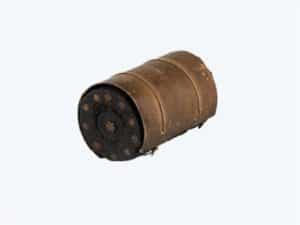
02 Jun Internet under the sea: the origin of submarine cables
Today we live in a hyper-connected world where instant communication is a given. But have you ever wondered how internet traffic travels to every corner of the planet? We find the answer in our seas and oceans, which for over a century and a half have housed thousands and thousands of meters of cables in their depths, without which the Internet would not be possible.
Submarine cables have been essential for the development of telecommunications around the world. These cables allow the transmission of data and voice over long distances and have been crucial in connecting different countries and continents. From the early telegraph cables connecting Europe with the Americas to modern fibre optic cables, there has been a significant evolution in undersea communication technologies.
In the early 19th century, transatlantic communications were a difficult task due to the long distances and the inability to send messages across the ocean. However, it was in the 50s of that century when different companies and governments launched themselves into the endeavour of connecting countries and continents through submarine cables. These were extended in Ireland, England or the Mediterranean, to the point that in 1858 there were already more than 30 submerged lines, the longest being in the Black Sea, with 574 kilometres.
In that same year, after proving the viability of these lines, the first attempt was made to connect Europe with America through a submarine telegraphy cable, which crossed the Atlantic Ocean from Newfoundland to Ireland. A company manufactured a cable made up of seven copper wires, covered with three layers of gutta-percha – a natural insulator that comes from the palaquium tree – and shielded with a spiral of steel wires. The cable had a diameter of just 1.75 centimetres, making it very flexible. In addition, it could be submerged vertically in the water six miles without breaking.

Image: SPL / AGE Fotostock
Despite the arduous journey and the difficulties of the project, the first transoceanic cable message was sent from Ireland in August 1858 which read ” Glory to God in the highest, and on earth peace to people of good will. “.
However, the cable did not take long to deteriorate to the point of making the line useless just three weeks after the inauguration. Despite multiple attempts and technological advances, this first cable was a failure. Success finally came in 1866 when the first transatlantic submarine telegraphy cable connecting North America and Europe was completed. This achievement allowed faster and more effective communication between both continents. Submarine telegraphy cables became an essential medium for transoceanic communication. These were improved and upgraded during the 20th century to become fibre optic cables.
The connection of submarine cables revolutionized communication between Europe and America, allowing the transmission of news and messages in a matter of minutes instead of weeks. As technological advances continued, more submarine cables were laid around the world, including cables connecting South America, Africa, and Asia.
Submarine cable technology was updated over time, and in the 1950s, coaxial cable technology began to develop. Coaxial cables significantly improved the quality of the transmission of voice and data signals, since they allowed greater transmission capacity and less interference. In the 1980s, fibre optic technology made its appearance in underwater communication. These are faster, more secure, and have a higher data transmission capacity than coaxial cables.
Currently, submarine fibre optic cables are the main form of transoceanic communication. Although many people think that data is transmitted via satellite, the reality is that over 90% travel by submarine cables, since they allow greater transmission speed and security. They have become a key infrastructure for global trade and international communications. Without the expertise of those early visionaries who laid the first telegraph wires, later advances, and perhaps even the Internet, would probably never have happened.
Did you know that the lyntia network has connections with the main submarine cable mooring points on the Peninsula and with interconnections with France, Portugal and Northern Africa? Learn more about our network here.

